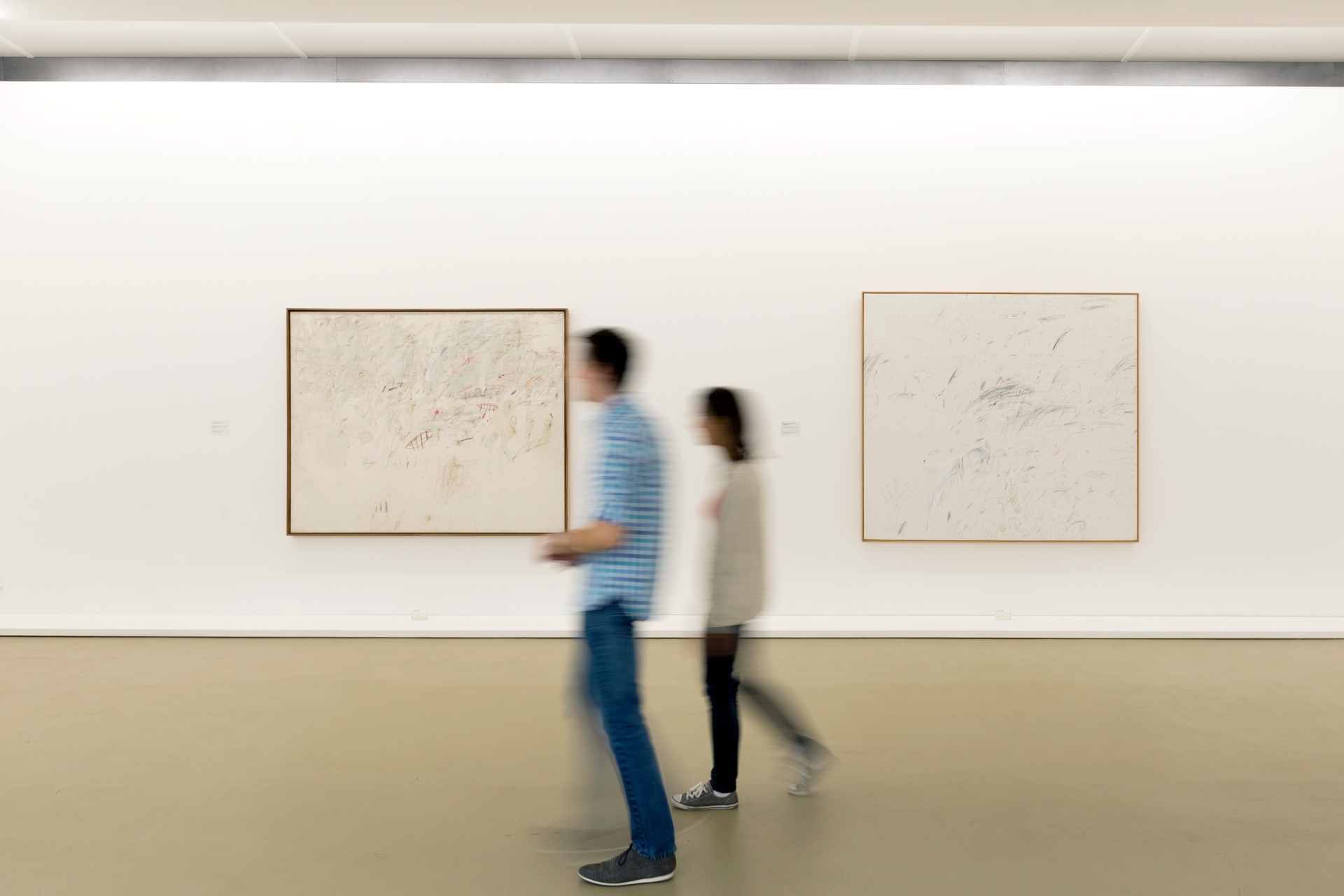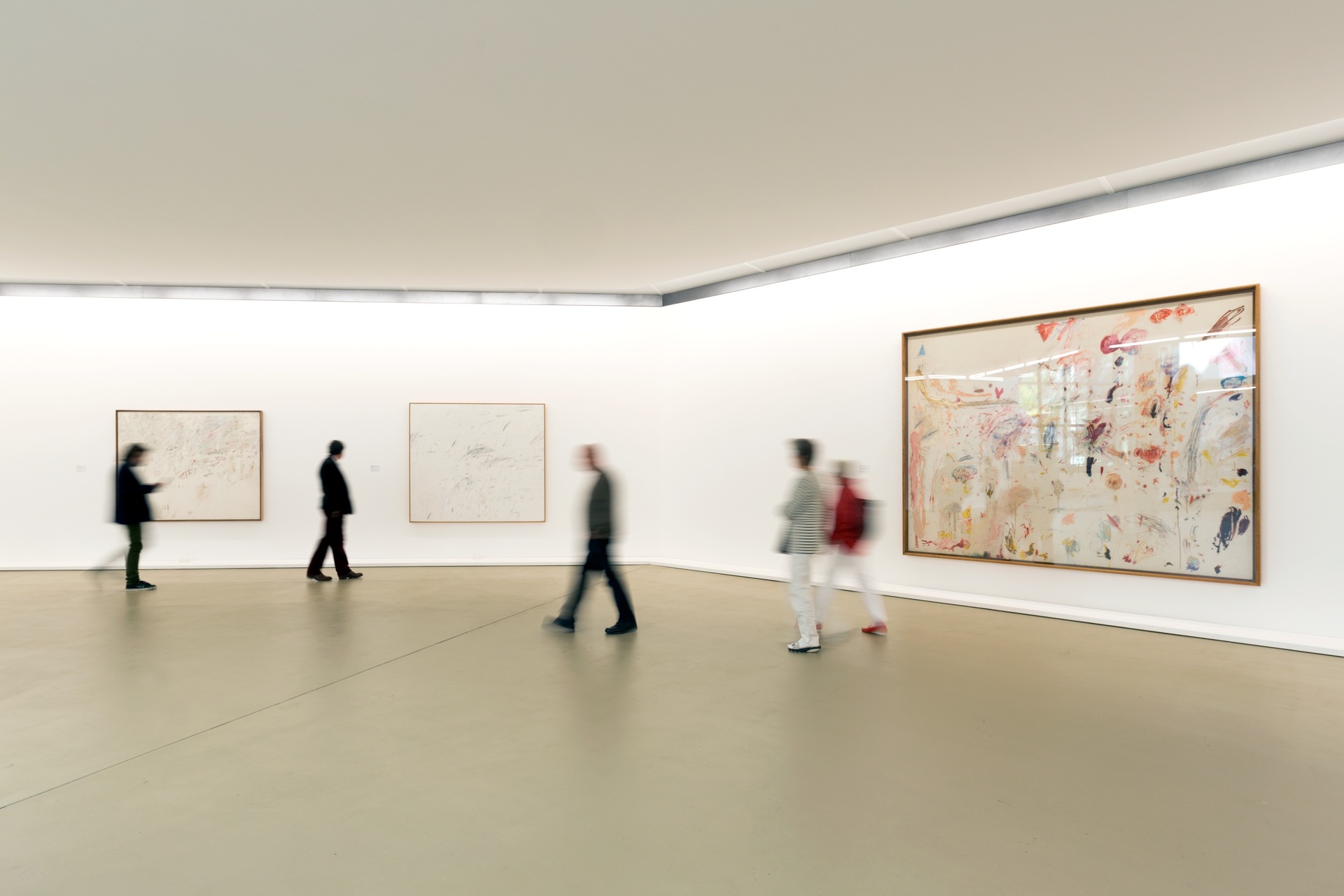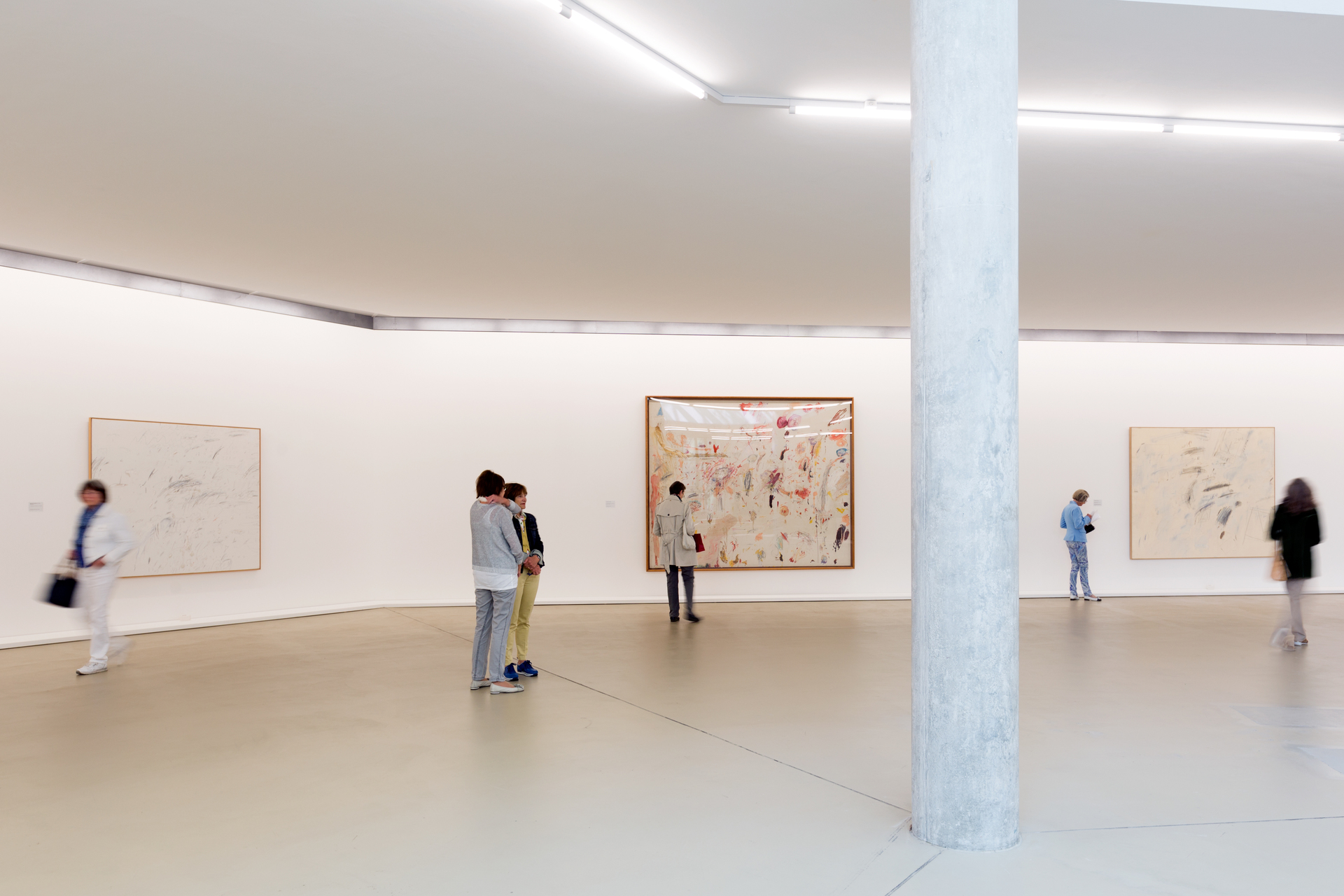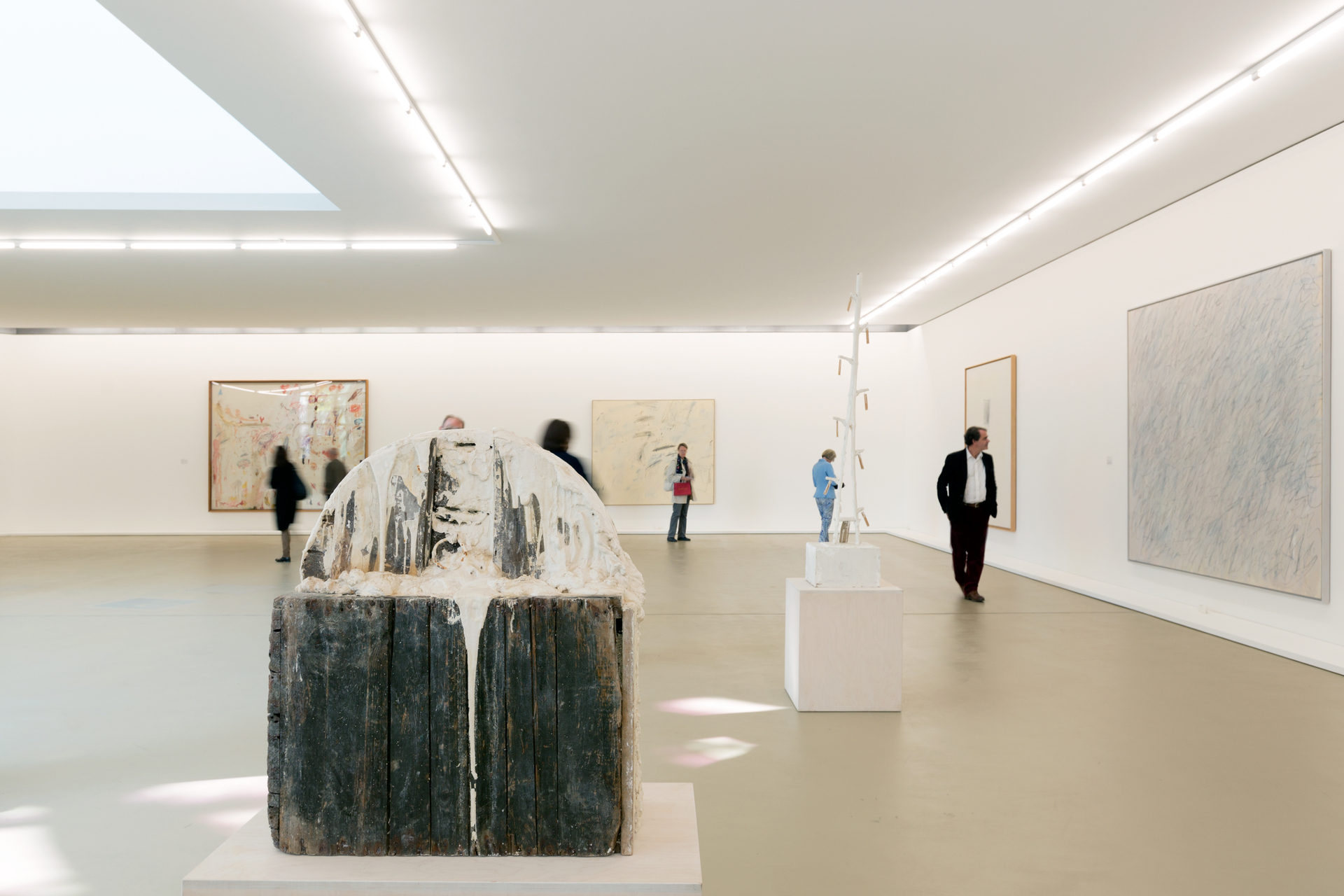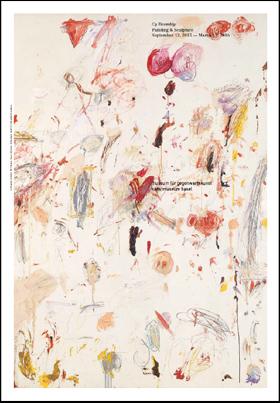Cy Twombly
Painting & Sculpture
The American artist Cy Twombly is regarded, alongside his friends Robert Rauschenberg and Jasper Johns, as one of the most important representatives of the generation of artists that in the course of the 1950s detached itself from Abstract Expressionism and developed influential idioms of its own.
Twombly was born in Lexington, Virginia, in 1928 and died in Rome in 2011. At a time when the art scene was shifting from Paris to New York, he chose to move in the opposite direction, namely to Rome, which became his home from 1957 onward. Here he found not only Mediterranean light, but also the history, myths, and poetry of Classical Antiquity, which would thereafter inform and inspire his work. Obeying an impetus to doodle, which is actually not unlike writing, Twombly activates his generally white canvases with lines, characters, and word fragments—scraps of personal recollection and the collective memory combining writing and images.
The focus of the exhibition is on the paintings of the 1950s to 1970s belonging to the collection of the Kunstmuseum Basel, supplemented with loans from the Emanuel Hoffmann Foundation and the Daros Collection, which has a significant body of work by Twombly at its disposal. Together they exemplify the developmental trajectory of the artist’s early period. The show opens with a painting of intimate format dating from 1954, when Twombly was still in New York, as is evident from the compact painting and gestural brushwork, both of which bespeak the influence of Abstract Expressionism. The paintings produced from 1957 onward, most of them in Rome, follow on seamlessly as the dark ground is abandoned in favor of brighter, bigger, landscape formats, liberally invested with rhythm by lines drawn in pencil, chalk, or oil. The pictures, it seems, are themselves testimony to the condition experienced at the time of their creation, even if certain corrective interventions—the numerous crossingsout and pentimenti, for example—allow the discarded forms to remain present. The result is an ambivalence between disclosure and concealment.
Presented here for the first time is the portrait-format painting Untitled of 1969, which was painted on the Lago di Bolsena north of Rome and shows a fine, window-like opening, rendered as pencil hatching, in a field of white. It was the gifting of this painting to the Kunstmuseum Basel by Katharina and Wilfrid Steib in 2013 that provided the initial spark for this exhibition.
The exhibition is supported by:
Foundation for the Kunstmuseum Basel
Isaac Dreyfus-Bernheim Stiftung
Bank for international settlements
